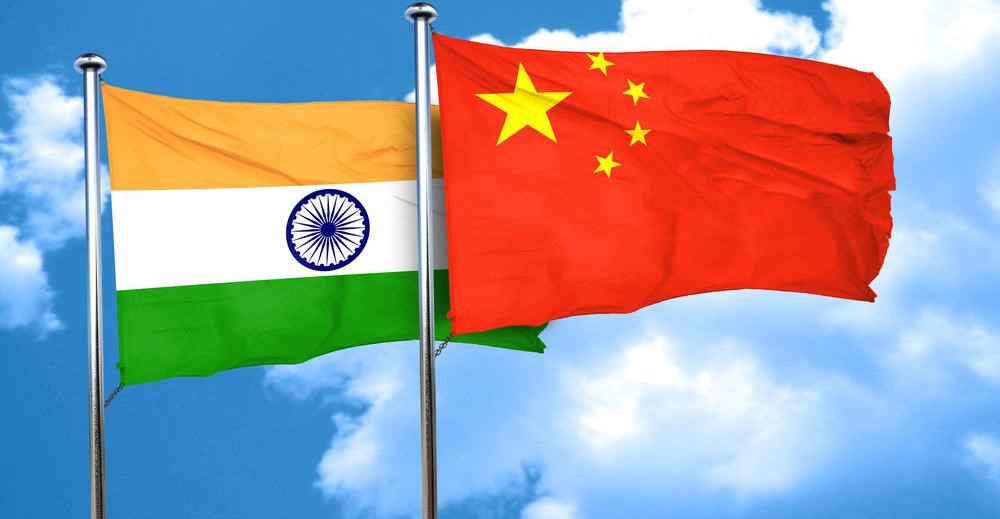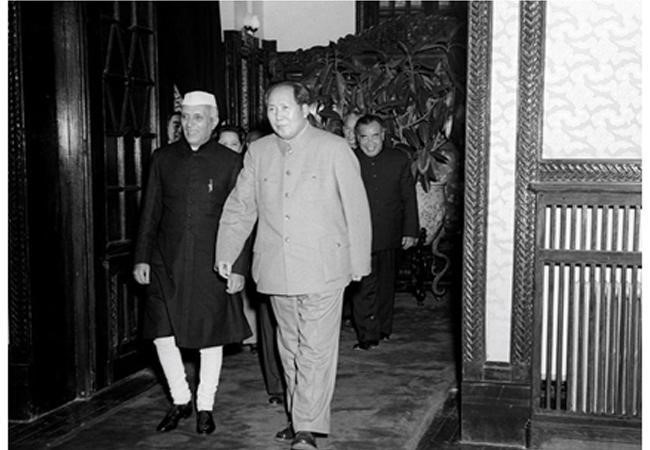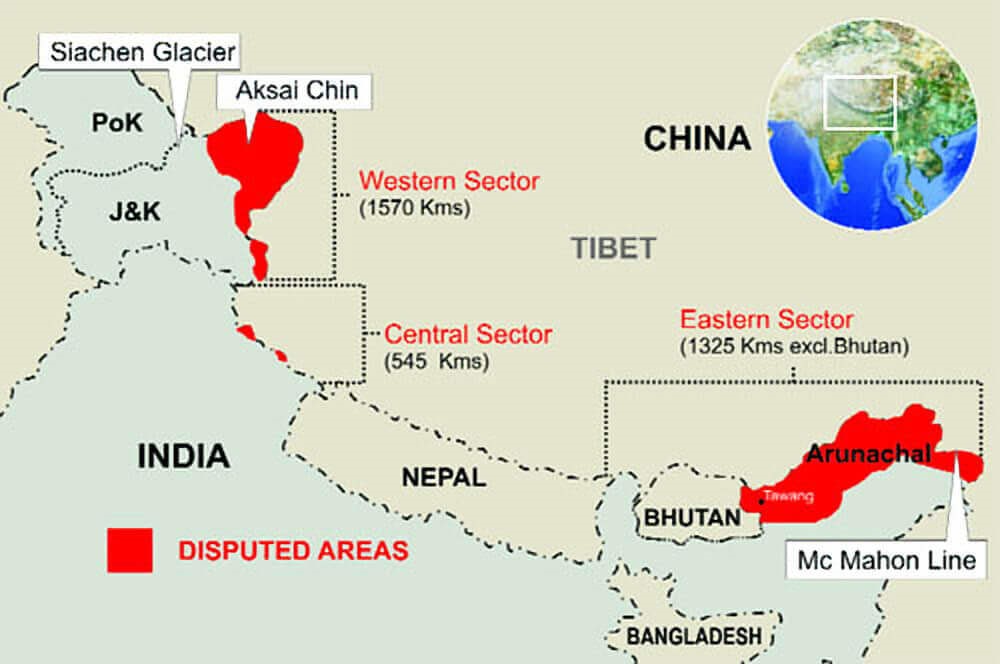PREVIOUS
India - China Bilateral Relations (Part I)
October 23 , 2019
2262 days
17626
0
So far
- India-China relations, also called Sino-Indian relations or Indo-Chinese relations, refers to the bilateral relationship between the Republic of India and the People's Republic of China (PRC).
- Although the relationship has been cordial, there are border disputes and economic competition between the two countries that have at times led to strained relations.

India-China Relations
- China and India share a very old history and relationship.
- Throughout the first millennium, they were the centers of spiritual and religious activities.
- The two countries suffered from western colonialism during the late 19th and early 20th centuries.
- However, political contacts between them were few. Culturally, it was mostly from India to China.
- “Maha-Cheena” and “Cheen-Amshuk” in Kautilya’s “Arthashastra” indicated trade links between Mauryan-India and China.
- Emperor Harshavardhan sent representatives to China reciprocated with two missions sent by Tang emperor Tai-Tsung.
- Unfortunately, Harshavardhan’s successors attacked a Chinese mission leading to the battle won by Chinese, the only battle in India-China relationship until 1962.
- Religious and cultural interactions existed between them during the first few centuries.
- The Islamic invasion in India made two countries living as strangers until the nineteenth century when Europeans colonized both.
- Before European colonization, China and India accounted for about 33 percent and 25 percent respectively of the world’s manufactured goods.
- China under the Song (960 - 1279) and Qing (1644 - 1912) dynasties was the superpower.
- Under the Guptas (320 - 550 CE) and Mughals (1526 - 1857), India’s economic, military, and cultural prowess was an object of envy.
- Then European powers overshadowed the Asian civilizations which declined, decayed, disintegrated and were eventually conquered by.
Post Colonisation
- During the British colonization, China had limited trade relations with India.
- In the early twentieth century, a great resurgence in Asia deeply influenced India and China who looked at each other with sympathy, admiration and sought mutual inspiration.
- After the outbreak of the Xinhai Revolution on 10 October 1911, revolutionary leader Sun Yat-sen was elected Provisional President and founded the Provisional Government of the Republic of China.
- Then the Second Republic of China was established in 1925, which was also known to the government of the Republic of China.
- It existed between 1 July 1925 and 20 May 1948 led by the Kuomintang Party (Chinese Nationalist Party).
- In 1941 when the Japanese invade China, Indian National Congress dispatched a medical mission to China headed by Dr. Kotnis. He died in action and remembered in both countries as a symbol of solidarity.
- In 1947 India became independent. India established diplomatic relations with the nationalist Kuomintang Chinese Government under Chiang Kai-shek in 1948.
- The communist People’s Republic of China was established on 1st October 1949, under the leadership of Mao Zedong (Founding Father of China), after the military defeat of the Kuomintang Government.
- Mao was the Head of China as Chairman of the Central People's Government between 1949 to 1954 and after the enactment of the First Constitution in 1954, Chairman of the People's Republic of China from 1954 to 1959.
- India was one of the first non-communist countries to immediately recognize it.

Evolution of Relations between 1949 – 1962
- During this period the Chinese ignored India’s independent status and demonstrated unhappiness about India’s non-alignment policy.
- Mao Ze Dong openly stated that one can either be towards imperialism or with socialism and a third road didn’t exist; he called Nehru a hireling of Anglo-American imperialism.
- However, Prime Minister Nehru viewed Indian independence and the Chinese revolution as parallel expressions of resurgent Asian nationalism and wanted them to be friendly.
- Nehru visualized China as the future third great power but hastened to add India as the fourth.
- The visits by prime ministers of China and India from June 1954 to January 1957 strengthened the friendly feeling.
- The Chinese army invaded Tibet on 7th October 1950.
- India stressed on peaceful negotiation of Tibet's problem; China dismissed Indian interference claiming Tibet as its internal affairs.
- In 1954 they signed “India-China agreement on trade and intercourse” following China and Tibet May 1951 treaty.
- In 1954 the signing of an eight-year agreement on Tibet initiated the India-China relationship based on Five Principles of Peaceful Coexistence (or Panch Shila); with the slogan – ‘Hindi-Chini Bhai-Bhai’.
- It was signed in Beijing by Nehru and Chinese Premier Zhou En Lai.

- In 1954, new Indian maps included the Aksai Chin region within its boundaries.
- The detection of a completed Chinese road in Aksai Chin of Ladakh in Jammu and Kashmir region instigated serious and frequent Indian protests and border clashes.
- In January 1959, PRC premier Zhou Enlai informed Nehru that China never accepted the Mcmohan Line defining the eastern border between India and China; rejecting Nehru’s contention that the border was based on treaty and custom.
- The Dalai Lama, the 14th Dalai Lama Tenzin Gyatso, spiritual and temporal head of the Tibetan people, required asylum in India.
- In March 1959, thousands of Tibetan refugees with the Dalai Lama settled in Dharmasala, Himachal Pradesh.
- China immediately proclaimed 104,000 sq. km of Indian Territory as their demanding “rectification” of the entire border.
- China wanted Aksai Chin back in exchange of its claim on India’s north-east.
- The Indian government rejected the idea as being humiliating and unequal. Relations further deteriorated during the 1960s.
- Border disputes resulted in a short border war between the People’s Republic of China and India on 20 October 1962.
- The PRC pushed the unprepared and inadequately led Indian forces to within forty-eight kilometers of the Assam plains in the northeast and occupied strategic points in Ladakh, until the PRC declared a unilateral cease-fire on 21 November and withdrew twenty kilometers behind its contended line of control.
- Relations between the PRC and India deteriorated during the rest of the 1960s and the early 1970s while the Sino-Pakistani relations improved; Sino-Soviet relations worsened; affecting Indo-china relations adversely.
- In late 1967 Indian and Chinese forces in Sikkim fought two battles, first – the “Nathu La incident” and second – the “Chola incident”.
- In August 1971, India signed its Treaty of Peace, Friendship, and Co-operation with the Soviet Union.
- The PRC sided with Pakistan in its December 1971 war with India.
- In 1978, the Indian Minister of External Affairs Atal Bihari Vajpayee made a landmark visit to Beijing, and both countries officially re-established diplomatic relations in 1979.
- They clashed again in 1984 in the Sumdorong Chu Valley in Arunachal Pradesh.
Rajiv Gandhi momentum
- India and China sought to normalize relations more than three decades ago when Prime Minister Rajiv Gandhi traveled to Beijing in 1988.
- A joint statement emphasizing the necessity to revive a warm relationship, increasing bilateral ties in diversified areas and moreover, resolving the border issues, was issued.
- In July 1992, Sharad Pawar visited Beijing, the first Indian Minister of Defence to do so.
- Confidence building measures continued in 1993.
- Different meetings were held to solve the “line of actual control” issue, deployment of armed forces along with it and mutual knowledge about military exercises etc.
- India’s nuclear test in May 1998 (Operation Shakti) again deteriorated the relationship when the then Indian Defence Minister George Fernandes stated China as ‘India’s greatest threat’.
- During the 1999 Kargil War China voiced support for Pakistan but also counseled Pakistan to withdraw its forces.
- In 2000 the Indian President’s visit to China; in 2002 the Chinese Premier’s visit to India; in 2003 the Indian Prime Minister’s visit to China improved the relationship greatly.
- China’s accepting Sikkim as an integral Indian state is a positive step towards solving the border problems.
- In 2006, China and India re-opened Nathula pass for trading. Nathula was closed 44 years prior to 2006.
- Both countries are at present concentrating on their respective growth stories.
- Certain issues however remain a sore point between them and must be solved through mutual dialogue.

Political Relations
- On 1 April 1950, India became the first non-socialist bloc country to establish diplomatic relations with the People’s Republic of China.
- Prime Minister Nehru visited China in October 1954.
- While the India-China border conflict in 1962 was a serious setback to ties, Prime Minister Rajiv Gandhi’s landmark visit in 1988 began a phase of improvement in bilateral relations.
- In 1993, the signing of an Agreement on the Maintenance of Peace and Tranquillity along the Line of Actual Control (LAC) on the India-China Border Areas during Prime Minister Narasimha Rao’s visit reflected the growing stability and substance in bilateral ties.
- - - - - - - - - - - - - - -
Leave a Reply
Your Comment is awaiting moderation.


